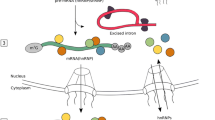Abstract
Unidirectional promoters dominate among mammalian genomes. However, the mechanism through which the transcriptional directionality of promoters is accomplished remains to be clarified. Insulin-degrading enzyme (IDE) is a ubiquitously expressed zinc metalloprotease, whose promoter contains a CpG island. We previously showed that the basal promoter region of mouse IDE has bidirectional transcriptional activity, but an upstream promoter element blocks its antisense transcription. Therefore, we wonder whether the human IDE promoter contains an analogous element. Similarly, the basal promoter region of human IDE (−102 ~ +173 and −196 ~ +173 relative to the transcription start site) showed bidirectional transcriptional activity. However, the region from −348 to +173 could only be transcribed from the normal orientation, implying that an upstream promoter element between −348 and −196 blocks the antisense transcription of the human IDE promoter. Through promoter deletion and mutagenesis analysis, we mapped this element precisely and found that the upstream promoter element locates between −318 and −304. Furthermore, the transcription-blocking elements in the mouse and human IDE promoters inhibited the transcription of the SV40 promoter when put downstream of it. In conclusion, we identify an upstream promoter element which blocks the antisense transcription of the human IDE promoter. Our studies are helpful to clarify the transcriptional directionality of promoters.





Similar content being viewed by others
References
Adachi N, Lieber MR (2002) Bidirectional gene organization: a common architectural feature of the human genome. Cell 109(7):807–809
Trinklein ND, Aldred SF, Hartman SJ, Schroeder DI, Otillar RP, Myers RM (2004) An abundance of bidirectional promoters in the human genome. Genome Res 14(1):62–66. doi:10.1101/gr.1982804
Liao WC, Ash J, Johnson LF (1994) Bidirectional promoter of the mouse thymidylate synthase gene. Nucleic Acids Res 22(20):4044–4049
Qvist H, Sjostrom H, Noren O (1998) The TATA-less, GC-rich porcine dipeptidylpeptidase IV (DPPIV) promoter shows bidirectional activity. Biol Chem 379(1):75–81
Dong S, Lester L, Johnson LF (2000) Transcriptional control elements and complex initiation pattern of the TATA-less bidirectional human thymidylate synthase promoter. J Cell Biochem 77(1):50–64
Kawai Y, Asai K, Miura Y, Inoue Y, Yamamoto M, Moriyama A, Yamamoto N, Kato T (2003) Structure and promoter activity of the human glia maturation factor-gamma gene: a TATA-less, GC-rich and bidirectional promoter. Biochim Biophys Acta 1625(3):246–252
Carninci P, Sandelin A, Lenhard B, Katayama S, Shimokawa K, Ponjavic J, Semple CA, Taylor MS, Engstrom PG, Frith MC, Forrest AR, Alkema WB, Tan SL, Plessy C, Kodzius R, Ravasi T, Kasukawa T, Fukuda S, Kanamori-Katayama M, Kitazume Y, Kawaji H, Kai C, Nakamura M, Konno H, Nakano K, Mottagui-Tabar S, Arner P, Chesi A, Gustincich S, Persichetti F, Suzuki H, Grimmond SM, Wells CA, Orlando V, Wahlestedt C, Liu ET, Harbers M, Kawai J, Bajic VB, Hume DA, Hayashizaki Y (2006) Genome-wide analysis of mammalian promoter architecture and evolution. Nat Genet 38(6):626–635. doi:10.1038/ng1789
Lin JM, Collins PJ, Trinklein ND, Fu Y, Xi H, Myers RM, Weng Z (2007) Transcription factor binding and modified histones in human bidirectional promoters. Genome Res 17(6):818–827. doi:10.1101/gr.5623407
Churchman LS, Weissman JS (2011) Nascent transcript sequencing visualizes transcription at nucleotide resolution. Nature 469(7330):368–373. doi:10.1038/nature09652
Tan-Wong SM, Zaugg JB, Camblong J, Xu Z, Zhang DW, Mischo HE, Ansari AZ, Luscombe NM, Steinmetz LM, Proudfoot NJ (2012) Gene loops enhance transcriptional directionality. Science 338(6107):671–675. doi:10.1126/science.1224350
Core LJ, Waterfall JJ, Lis JT (2008) Nascent RNA sequencing reveals widespread pausing and divergent initiation at human promoters. Science 322(5909):1845–1848. doi:10.1126/science.1162228
Seila AC, Calabrese JM, Levine SS, Yeo GW, Rahl PB, Flynn RA, Young RA, Sharp PA (2008) Divergent transcription from active promoters. Science 322(5909):1849–1851. doi:10.1126/science.1162253
Authier F, Posner BI, Bergeron JJ (1996) Insulin-degrading enzyme. Clin Invest Med 19(3):149–160
Zhang L, Ding Q, Wang Z (2012) Nuclear respiratory factor 1 mediates the transcription initiation of insulin-degrading enzyme in a tata box-binding protein-independent manner. PLoS ONE 7(8):e42035. doi:10.1371/journal.pone.0042035
Zhang L, Ding Q, Wang P, Wang Z (2013) An upstream promoter element blocks the reverse transcription of the mouse insulin-degrading enzyme gene. Biochem Biophys Res Commun 430(1):26–31. doi:10.1016/j.bbrc.2012.11.052
Yang MQ, Elnitski LL (2008) Diversity of core promoter elements comprising human bidirectional promoters. BMC Genomics 9(Suppl 2):S3. doi:10.1186/1471-2164-9-S2-S3
Zanotto E, Shah ZH, Jacobs HT (2007) The bidirectional promoter of two genes for the mitochondrial translational apparatus in mouse is regulated by an array of CCAAT boxes interacting with the transcription factor NF-Y. Nucleic Acids Res 35(2):664–677. doi:10.1093/nar/gkl1037
Zanotto E, Hakkinen A, Teku G, Shen B, Ribeiro AS, Jacobs HT (2009) NF-Y influences directionality of transcription from the bidirectional Mrps12/Sarsm promoter in both mouse and human cells. Biochim Biophys Acta 1789(5):432–442. doi:10.1016/j.bbagrm.2009.05.001
Tiana M, Villar D, Perez-Guijarro E, Gomez-Maldonado L, Molto E, Fernandez-Minan A, Gomez-Skarmeta JL, Montoliu L, del Peso L (2012) A role for insulator elements in the regulation of gene expression response to hypoxia. Nucleic Acids Res 40(5):1916–1927. doi:10.1093/nar/gkr842
Acknowledgments
This work was financially supported by the National Basic Research Program (973 Project) of China (No. 2013CB530802), and the Tsinghua University Initiative Scientific Research Program (20111081143).
Author information
Authors and Affiliations
Corresponding author
Electronic supplementary material
Below is the link to the electronic supplementary material.
Rights and permissions
About this article
Cite this article
Zhang, L., Wang, P., Ding, Q. et al. Transcriptional directionality of the human insulin-degrading enzyme promoter. Mol Cell Biochem 382, 237–242 (2013). https://doi.org/10.1007/s11010-013-1739-y
Received:
Accepted:
Published:
Issue Date:
DOI: https://doi.org/10.1007/s11010-013-1739-y




